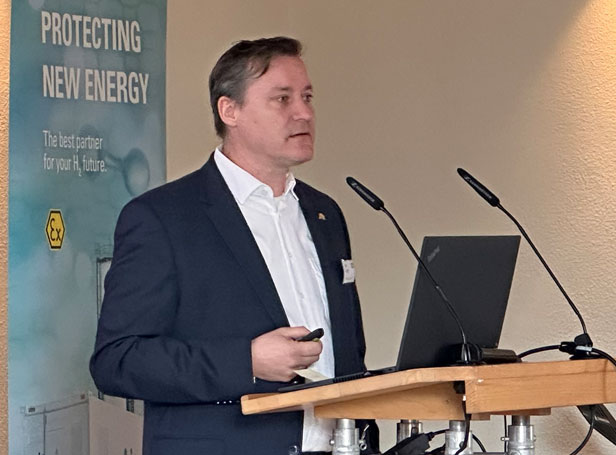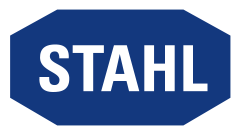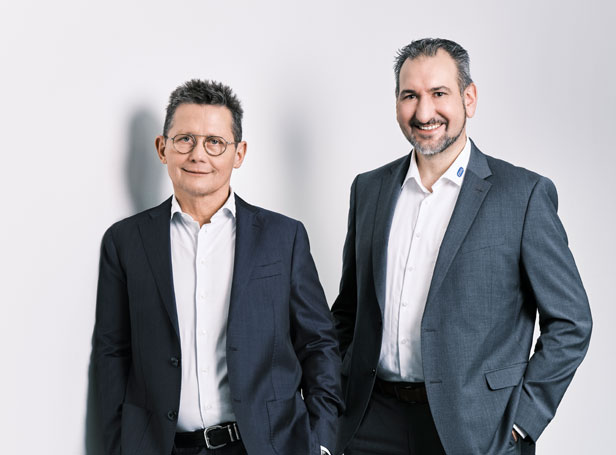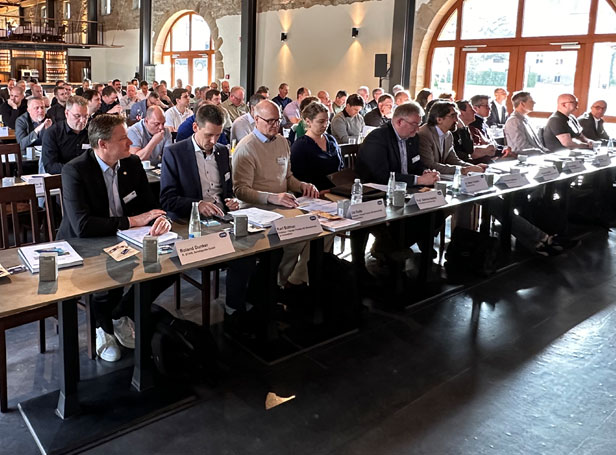R. STAHL intends to focus on internationalization and digitalization in financial year 2025 as part of the Group’s EXcellence 2030 strategy. The digitalization strategy has three main components: Digitalization within the company, digitalization of products and digital services for customers. Thomas Merkel, Senior Vice President Global IT & Digitalization, talks about digitalization as a general task that impacts all areas of the company.
Can you explain the different aspects of digitalization in greater detail?
Thomas Merkel: I would be happy to! Basically, IT is evolving from a cost center to a strategic partner that actively contributes to the value chain and drives innovation. One of the most important projects we have carried out in recent years was the comprehensive implementation of our ERP (Enterprise Resource Planning) system. We are standardizing and optimizing our core business processes – from finance and human resources to production, supply chain, sales and procurement – in all R. STAHL companies. Our last subsidiary was switched to the new system in May 2025, at which point consolidation within the Group will be complete. We are currently working on the digitalization of production and production control. This allows us to bridge the gap between planning and production and make processes even more efficient.
That relates primarily to internal processes. How do customers benefit from digitalization?
Thomas Merkel: Our customers are of course our focus! A good example is our webshop “MY R.STAHL”. Customers can already order a wide range of standard products from the shop and in future will be able to use a product configurator to put together their own terminal boxes for the desired application, for example. These orders are then quickly and easily transferred directly to production without any detours. We also prepare our data in such a way that it can be processed automatically and interoperably at the customer’s interfaces. This represents real added value and saves our customers a substantial amount of work. Our DigitalTwin platform is a real highlight. It stores digital copies of a physical object with all relevant information, which our customers can access at any time and from anywhere in the world via a standardized interface of the asset administration shell (Rest API). This allows them to integrate and use the digital twins directly in their own processes.
That sounds exciting. What else can we expect in the future?
Thomas Merkel: Digitization naturally depends on the quantity and quality of the data. And we are now well positioned in many areas – something that we have good reason to be proud of. An important project for the future is our digital product passport, which contains information on materials, ingredients, chemical substances, environmental data such as the carbon footprint and also information on reparability and proper disposal for each component. This will gradually become mandatory throughout the EU as a way to promote transparency and sustainability throughout the entire life cycle of a product. Some competitors will find this difficult. We are ready and are in a position to get it done. Artificial intelligence applications, which we are already using in certain areas, will certainly become even more widespread. But there is one critical precondition: Safety is our top priority. We cannot afford to allow AI to produce so-called “hallucinations”. That is why we are working on reliable, secure applications.
These articles might also interest you







![[Translate to Englisch:] [Translate to Englisch:]](/fileadmin/user_upload/mitarbeiter/01_DE/07_Blog/00_Allgemein/blog-explosionsschutz-rstahl-startseite-279x205.jpg)
![[Translate to Englisch:] [Translate to Englisch:]](/fileadmin/user_upload/mitarbeiter/01_DE/07_Blog/00_Allgemein/blog-explosionsschutz-rstahl-ueber-den-blog-279x205.jpg)
![[Translate to Englisch:] [Translate to Englisch:]](/fileadmin/user_upload/mitarbeiter/01_DE/07_Blog/00_Allgemein/blog-explosionsschutz-rstahl-autoren-279x205.jpg)
![[Translate to Englisch:] [Translate to Englisch:]](/fileadmin/user_upload/mitarbeiter/01_DE/07_Blog/00_Allgemein/blog-explosionsschutz-rstahl-newsletter-expert-mail-279x205.jpg)
Write new comment